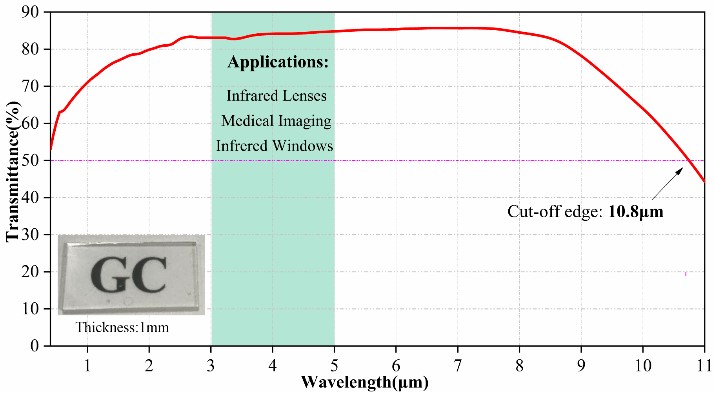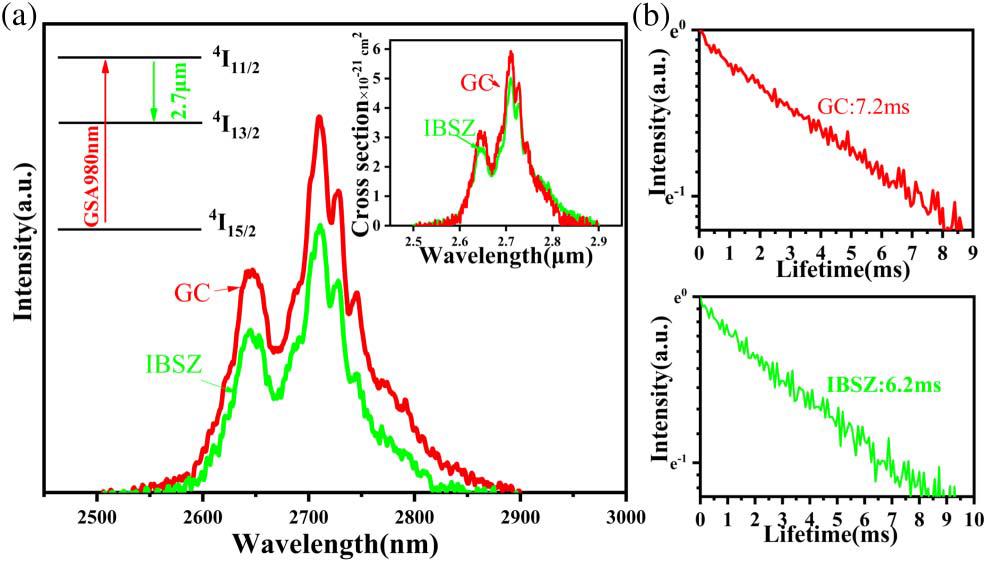Fluoride crystals can be ideal optical and photonic materials due to their low phonon energy, high transmittance in wide wavelength range and high solubility of rare earth ions. However, they can hardly realize large-scale and complex shapes in practical applications.
As is known, glass ceramics can meet the needs of large-scale, complex shapes, and various practical applications. Traditional solution is to prepare oxide and oxyfluoride glass, and then crystallize fluoride crystallite. Unfortunately, the high phonon energy of the oxide glass matrix will affect the inherent advantages of the fluoride crystals, which could severely decrease the fluorescence property and the IR transmission range. Hence, it is urgent to find a system that can maintain the properties of fluoride crystals.
A research team led by Professor ZHANG Long from Shanghai Institute of Optics and Fine Mechanics of the Chinese Academy of Sciences has recently prepared the glass ceramics in perfluoride system. The result was published in Optical Letters.
In their experiment, the designed composition is InF3-BaF2-SrF2-ZnF2-LuF3-ErF3. The corresponding mixture was heated at 850°C for 30 min, and an appropriate amount of SrF2 and LuF3 and LuF3 powder was added into the original melt with intermediate stirring. Then the melt was kept at this temperature for 10 min and was finally poured on the cold mold. This led to a perfectly transparent glass ceramic.
The perfluoride glass ceramic containing desired (Sr0.84Lu0.16)F2.16 crystallites presented ideal performance. The glass ceramic exhibited high transmittance (T ≥ 50%) from UV to the far-IR (IR cutoff edge = 10.8 μm). Particularly, the average transmittance of sample in the IR range (3–8.5 μm) is up to 85% (thickness: 1 mm).
This glass ceramic maintained the original properties of the crystal phase well, which indicates the work effectively broke through the performance limitation of a glass matrix on fluoride crystallites in glass ceramic.
The material also shows high hardness, excellent chemical stability, strong fluorescence emission, and long lifetime at 2.7 μm. Therefore, it is considered as a promising IR window and host material.

(a) X‐ray diffraction of GC and the structure of crystalline; (b) the transmission microscope micrograph removed the background of GC; (c) the SEM images of the fractured surface of GC. (Image by SIOM) 
Transmittance spectra range. (Image by SIOM) 
(a) Fluorescence spectra of GC and fluoroindate glass. (b) Fluorescence decay curves of the Er3+: 4I11/2 level. (Image by SIOM)
Article website: https://doi.org/10.1364/OL.44.004857
Contact:
Mr. CAO Yong
General Administrative Office
Shanghai Institute of Optics and Fine Mechanics, CAS
Email: caoyong@siom.ac.cn